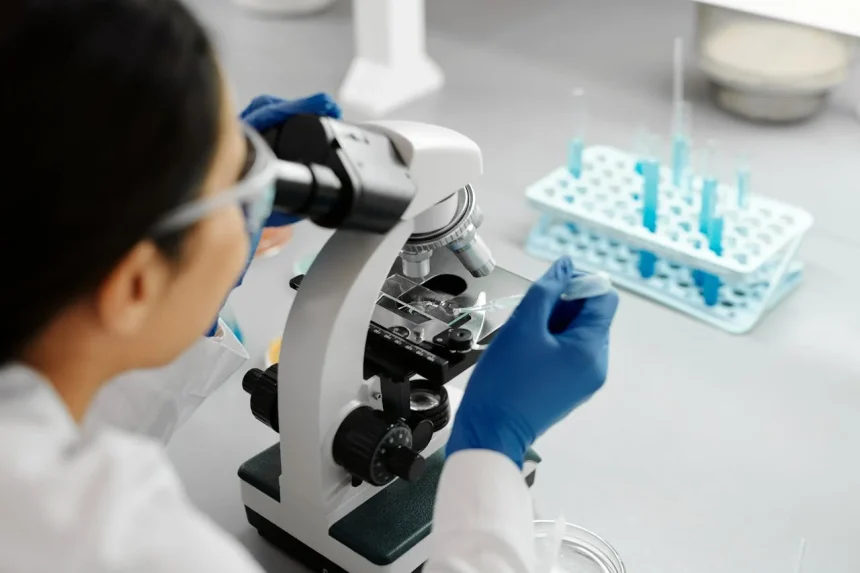In biological research, cell lines serve as powerful tools for studying cellular behavior, disease mechanisms, and therapeutic interventions. Two commonly used types are wild-type and gene-edited cell lines. While wild-type cell lines represent the unaltered, naturally occurring genetic state of a cell, gene-edited lines are engineered to carry specific genetic modifications.
Understanding the differences between these cell types is essential for designing experiments, interpreting data, and advancing research in genetics, drug development, and functional genomics.
Key differences between wild-type and gene-edited cell lines
Wild-type and gene-edited cell lines serve distinct purposes in research and offer unique advantages depending on the experimental goals. While wild-type cells provide a natural genetic baseline, gene-edited cell lines allow scientists to explore specific genetic functions and model diseases with precision.
Genomic stability and variability
Wild-type cell lines retain their natural genetic makeup, which often involves inherent genomic instability. For example, HEK-293 cells exhibit genomic instability, characterized by a pseudo-triploid karyotype (modal chromosome number 64) and a 4-kbp adenoviral DNA inserted on chromosome 19. This inherent heterogeneity contributes to phenotypic variability even within clonal populations, complicating reproducibility in experiments. Transcriptomic comparisons of wild-type clones reveal hundreds of differentially expressed genes linked to cell adhesion, proliferation, and extracellular matrix organization.
Engineered lines, such as HEK-293T cell lines, integrate viral elements through the expression of a temperature-sensitive SV40 T-antigen mutant to boost transfection and enable enhanced production of lentiviral vectors. Gene-edited cell lines aim to reduce variability by introducing targeted modifications such as knocking out genes, introducing reporter systems, or enhancing certain cellular functions using technologies like CRISPR/Cas9 or TALENs. These edits, however, if derived from heterogeneous wild-type populations, may give rise to new phenotypic variables, exacerbating clonal variability.
To resolve this issue and ensure consistency, researchers often isolate isogenic wild-type clones before performing genetic modifications.
Functional modifications
Wild-type cell lines preserve the physiological gene expression patterns of their tissue of origin. This makes them ideal for baseline comparisons and understanding normal cellular responses. For example, C2C12 (mouse myoblast) wild-type cells are used to study muscle differentiation under standard conditions.
Gene-edited cell lines are tailored for specific functional studies. For instance, introducing a BRCA1 mutation in MCF-7 (human breast cancer) cells allows researchers to study hereditary breast cancer. Such functional modifications enable precise interrogation of gene functions, pathways, and disease mechanisms, offering a direct tool for hypothesis testing and validation.
Applications of wild-type cell lines
- Biomanufacturing: Wild-type cell lines, such as CHO (Chinese Hamster Ovary), are used in biomanufacturing to support the large-scale production of vaccines and antibodies. This ensures stable expression and scalability, which are crucial for pharmaceutical research and industrial applications like monoclonal antibody production and viral vector development.
- Disease modeling: Wild-type cell lines serve as control models for studying cellular responses to drugs or environmental stressors, as their lack of genetic alterations ensures unbiased outcomes.
Applications of gene-edited cell lines
- Drug screening: High-throughput screening platforms use reporter systems integrated into gene-edited cells to evaluate drug candidates efficiently.
- Biotechnology and medicine: Gene-edited cell lines have transformed disease modeling and gene therapy validation. In the biotechnology industry, gene-edited CHO cells are engineered to improve protein production for biopharmaceuticals. Similarly, gene-edited T-cell lines are used to test immunotherapies like CAR-T cells in cancer treatment.
Challenges in the utilization of wild-type and gene-edited cell lines
Despite their utility, both wild-type and gene-edited cell lines come with challenges.
- Reproducibility issues: A significant issue for gene-edited lines is reproducibility, as variations in editing efficiency, off-target mutations, or clonal selection can lead to different phenotypes even when the same gene is edited in the same cell type. This complicates cross-laboratory comparisons and can diminish the reliability of published findings. For example, two labs using A549 (lung carcinoma) cells may observe different growth patterns due to differing off-target effects. Wild-type cell lines, though more stable, can also accumulate genetic drift over prolonged culture, especially when rigorous quality control is not performed. Additionally, their lack of disease-specific features limits their utility in personalized medicine research.
- Ethical considerations: Editing wild-type alleles in healthy cells raises ethical concerns regarding unintended consequences, long-term safety, and potential misuse for human enhancement. For instance, disrupting the PCSK9 gene to lower LDL cholesterol levels could inadvertently affect immune function or infection resistance—evolutionarily conserved roles that underscore the potential for unforeseen consequences. Similarly, the editing of the CCR5 gene in healthy embryos to resist HIV, exemplified by the controversial case of CRISPR-edited babies in China, sparked global outcry due to unknown long-term effects.
Wild-type models offer crucial biological authenticity for studying native cellular processes and producing biologics, and despite their genomic instability, exemplify the versatility of cellular models in modern research, connecting basic science to clinical applications in gene therapy. Gene-edited systems, on the other hand, facilitate high-efficiency genome manipulation for targeted applications such as drug screening and disease modeling.
Experimental goals drive the choice between wild-type and gene-edited cell lines, as each offers distinct advantages; however, both systems require rigorous quality control to manage their inherent heterogeneity. As gene editing technologies advance and wild-type cell populations become more standardized, researchers can better harness their potential while addressing reproducibility and ethical concerns. Employing strategies such as isogenic controls and precision tools like base editors will be crucial for reducing variability and translating findings into clinical applications.
References
- Lin, Y. C., Boone, M., Meuris, L., et al. Genome dynamics of the human embryonic kidney 293 lineage in response to cell biology manipulations. Nature communications, 5, 4767 (2014).
- Falah, G., Sharvit, L., & Atzmon, G. CRISPR-Cas9 mediated d3GHR knockout in HEK293 cells: Revealing the longevity associated isoform stress resilience. Experimental Gerontology, 196, 112586 (2024).
- Dresang, L. R., Van Scoyk, C. A., Kuehn, K. J., et al. Comparing transcriptomic profiles from seven cell lines to elucidate liver metastatic potential. Advances in Cancer Biology-Metastasis, 4, 100018 (2022).
- Doudna, J. A., & Charpentier, E. The new frontier of genome engineering with CRISPR-Cas9. Science, 346, 1258096 (2014).
- Gaj, T., Gersbach, C. A., & Barbas, C. F. ZFN, TALEN, and CRISPR/Cas-based methods for genome engineering. Trends in biotechnology, 31, 397-405 (2013).
- Westermann, L., Li, Y., Göcmen, B., et al. Wildtype heterogeneity contributes to clonal variability in genome edited cells. Scientific reports, 12, 18211 (2022).





